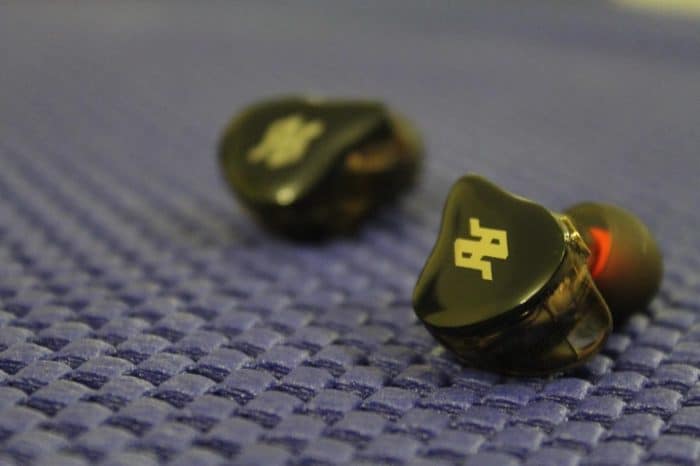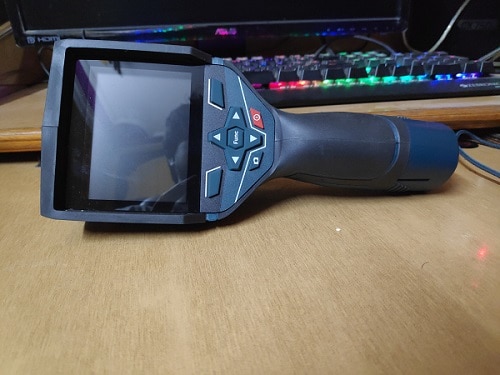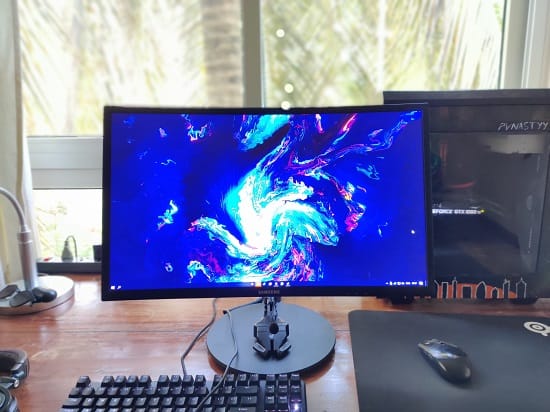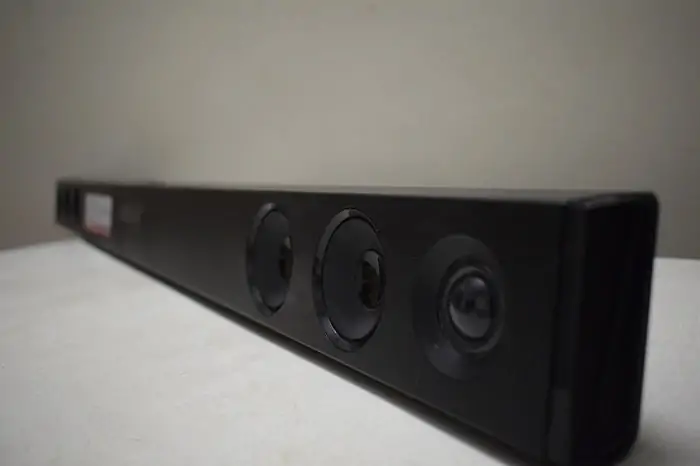Review of the TENHZ P4 Pro Earphones
This review has been long overdue, and understandably so, considering the constant influx of new ‘Flavor of the Month’ in-ear monitors (IEMs) from CHi-Fi manufacturers. With each passing month, attention-worthy IEMs emerge, demanding consideration and often justifying their cost. Recently, the market has been flooded with outstanding earphones like the BGVP DM6 & DMG, Whizzer Kylin, and other exceptional options in the sub $200 price range, which have significantly disrupted the consumer space.
In the midst of this flurry of top-tier choices, the TENHZ P4 Pro has further complicated matters for the average buyer. As a result, it has become increasingly challenging for consumers to confidently shortlist and pinpoint the best value for money proposition that aligns with their preferences and budget. With so many compelling options vying for attention, making the right choice has become an even more critical and intricate decision-making process for potential buyers.
Introduction :
Luckily for the TENHZ P4 Pro, picking them over the competition is fairly easy thanks to their distinct sound signature (will come into this in a bit) and the cost at which these can actually be procured for! My review unit was sent to me at no cost by Hifinage India, in-order to get an unbiased & honest opinion of these new pair of in-ears.
Prior to acquiring the P4 Pro, I have had relatively no idea about the manufacturer ‘TENHZ’ whatsoever and so I get into the review without knowing any history of them or having a colored mindset of how the P4 Pro or any other iem from the TENHZ stable actually sounds like.
All my testing and impressions are purely based off the pairing with the Fiio Q5 and Tidal Hi-Fi / Apple Music off the iPhone 5S because I found this combination to bring out the best out of the P4 Pro. However, I have also tested them out on a variety of different sources such as the Shanling M0, xDuoo XD-05, Cayin N5ii, Schiit Modi Multibit and the Topping D50 just for reference purposes.
The P4 Pro have an all BA configuration with 4 BA’s per side and comes off as fairly sensitive and extremely easy to drive at 26 ohms and 110db/mW so these can easily be driven off any portable MP3 player or budget mobile phone. Connection type is via single ended cable with MMCX termination at the transducer end and a 3.5mm at the source end.
What’s in the BOX :
The P4 Pro come in a relatively simple and conservative packaging with a fairly decent accessory list in the box for the price. There’s a classy looking faux leather storage case with a magnetic clasp and a fair amount of ear tips (silicon and foam) which are above average in terms in terms of quality. Almost any ear should be able to find a good fit with the tips provided within the box although that said, the tips provided aren’t the best in-order to get the best sound quality from the P4 Pro (more on that in a bit).
The iems themselves look really well made and put together with a good fit within the ear which is fairly comfortable and non-fatiguing for wearing on longer listening sessions. The transducers can be had in two color variations : Black and Carbon Fiber, my review unit here was all Black.
Sound Impressions:
The P4 Pro is near flat sounding and neutral with very less warmth. There are times when it sounds too clinical and cold based on the source being paired with and the main standout or attention grabber being the midrange performance. Clearly these iems were made taking into consideration a target audience that would like to hear a lot of classical, instrumentals, jazz and so on.
Bass:
Bass on the P4 Pro is lean and anemic of sorts and can be found lacking in quantity based on the source being paired with. With the Fiio Q5, the bass is just about right and the quantity and quality is well put forward which brings about a solid body to the lower mids as well. The P4 Pro do not like being EQ’ed in the bass frequencies one bit so you are better off using the bass boost setting on the Fiio Q5 or the xDuoo XD-05 to get the job done in-case one does want more punch in the bass department, specially decent sub bass extension. This iem definitely isn’t meant for the bass heads out there by any means.
Mids:
This department is the party piece of the P4 Pro and even puts iems in price brackets twice its range to shame. Mids are smooth and well textured with being extremely clear and forward in placement. Irrespective of the track being played, the first thing to take your attention and with surprise is the midrange. The only real piece of complain or rather to be nitpicking is that the mids do sound slightly choked or lack little airiness, especially so on complex tracks. Instrument separation is excellent for the price and only comes off as second to the BGVP DM6 which trumps the P4 Pro in a more coherent separation which has better flamboyance thanks to being slightly more airy lending it better width.
The stock in-box tips doesn’t help the P4 Pro’s cause too much either which makes the entire presentation sound like as if panning from one ear to the other in a single plane, very 2D like. Using some aftermarket wide bore silicone tips helps considerably here and makes some breathing space in the midrange, post which, the midrange performance definitely trumps the midrange of the BGVP DM6 for clarity and texture by a long shot. The vocal representation on the P4 Pro alone is enough to make listeners to be completely be submerged in musical bliss.
Treble:
This is one department where the ear-tips and the source play a huge part. Stock tips and an average source such as a budget smartphone can completely ruin the entire treble experience of these iems altogether. Paired to the Fiio Q5 and using aftermarket wide bore silicone tips, the treble performance can come off as smooth and well scaled, almost at the borderline of being a touch bright. Using foam tips only brings out the worse from the P4 pro, atleast from the stock foam tips.
Paired to the Fiio Q5, the treble response is extremely well scaled and resolving with the perfect control over brightness and sibilance. Similarly, pairing the P4 pro with the Shanling M0, even though extremely detailed, the treble lost control plenty of times making the lower and mid treble to be exaggerated and at times even succumb to sibilance.
Comparability:
On popular demand, a lot of people were interested in knowing how the P4 Pro compares to the BGVP DM6, BGVP DMG and the Whizzer Kylin which are all available at similar price points, very close to one another. To be fair, the BGVP DMG and the Whizzer Kylin have a completely different sound signature compared to that of the P4 Pro and the DM6 so a direct comparison wouldn’t really make much sense among all of them.
However, since the TENHZ P4 pro and the BGVP DM6 have a lot more in common by being balanced and fairly neutral, it would be interesting to see how these two fare over a couple of tracks when looked at in detail.
Sunset Lover – Petit Biscuit (Electronic)
BGVP DM6: Aggressive bassline lingering right throughout the track with easy distinction of a layered bass presentation, warmer signature which lends it to be very ear pleasing, vocals are right within the mix without sounding recessed or standing out by being forward yet its width is brilliantly spaced without making it sound congested. Probably it’s a little too warm and thick (read rich) sounding for this track.
TENHZ P4 Pro: Subtle articulate bass although bass light, vocal progression takes center stage and ever so slightly forward biased in the mids, brilliant imaging and separation of the instruments with superb coherency and transparency throughout the track, definitely wider in the soundstage of the 2 here. This track absolutely shines on the P4 Pro.
Fast Train – Brian Hughes (Jazz)
BGVP DM6: Straight off, everything sounds musical yet technical thanks to the added warmth and thickness in the mids. Even though instrument separation is really articulate, what’s really lacking here is that forwardness sparkle to the electric instruments. Cymbal crashes are slightly damp and thick again instead being sparkly and clean. Piano in the background is absolutely brilliant though and so is the really excellent timbre.
TENHZ P4 Pro: The moment the track starts and you get a feeling of airiness and being really natural and effortless. P4 Pro definitely is the more neutral sounding of the two here. Instrument separation is great and so is the timbre again. Cymbal crashes are amazing with perfect sparkle! Could hear this track again and again just for those cymbal crashes throughout the latter half of the track. Again, P4 Pro it is for its coherency and sparkly nature.
Rude – MAGIC! (Don’t Kill the Magic) (Pop)
BGVP DM6: Immediately you are taken aback at the slightly laid back, warm and mid bass bloat that’s very apparent & highlighted on this track. Instruments and drums in particular though, sound absolutely fantastic with the right timbre and articulate extension in the upper mids and lower treble. Upper treble lacks that slight amount of sparkle on the high-hats of this song but unless one is looks at nitpicking, this may very well go un-noticed as the imaging and instrument separation steals the show for the most part. Something to take note of here is that the track has a noisy or hissy background and the DM6 has this uncanny knack of exaggerating any such flaws and the background noise is very apparent in this track. A black background sounds pitch black and a noisy background sounds like, well, Noise!
TENHZ P4 Pro: P4 Pro in its usual trait of being more neutral & mid forward makes the vocals the attention garner again and even though this track is more about the instruments and the soundstage at offer, it’s a pretty interesting take that the P4 Pro has here. Instruments sounds slightly more muted and the imaging is more in a plane than all around you unlike the DM6 presentation. Instrument separation is good and nothing to complain off but listening to the DM6 back to back and you realize how much more engaging the DM6 is with this particular track.
Nindiya Re – Kaavish (Coke Studio Sessions – Season 4) (Indian Pop)
BGVP DM6: Starts off on an excellent note with lots of promise as the guitar plucks start off on the left channel and then few seconds later in the right channel. Very relaxed presentation but absolutely outdone once the heavy male vocal start in the track throwing up and highlighting the very flaw of the DM6 which is mid bass bump which has an undesired effect on the lower mids making it sound slightly dark and less airy and natural. Correcting the EQ with -2dB to -5dB on the 125kHz frequency bar helps considerably here and on most tracks with the DM6 which makes the presentation near flawless due to its reduced mid bass presence and hence ending up sounding slightly less warm overall.
P4 Pro: If there were ever a real race between the hare and the tortoise and the tortoise won it inspite of the hare taking no breaks and running in a straight line, this song would be the best example of that scenario! The only words that come to you instantly are coherency, articulate and clinical without being cold and emotionless. The sense of depth & feel to this song is so mesmerizing on the P4 Pro that you would easily mistake these budget friendly pair of iems to be at a far higher price-point. This very track showcases what the P4 Pro’s main strengths are, which are vocals and midrange presentation in particular.
Final Words:
From the comparison done in the tracks above, it’s surprising enough to see that the P4 Pro can still hold its own against a far more expensive iem based on the genre of music being picked, provided the right source is at play. Infact, the P4 Pro every once in a while can be found for as low as 80$ on Massdrop which significantly undercuts the competition by almost half, making them an even more irresistible proposition. A much deserved applause to TENHZ for trying to provide a really high quality product at such a low price-point.
Buying Link : Aliexpress | Amazon | HifiNage
Also Check:
[content-egg-block template=custom/all_offers_list]
FAQ
Q. What earphone tips do you recommend for tin audio t2 and bqeyz kc2?
Ans. T2 sounds good with wide bore silicon tips that comes within the package itself.
However, I use the Momentum’s tips with the T2 and they sound fantastic!
About Author
 Name : Sahil Santosh
Name : Sahil Santosh
Bio : Budding Audiophile, Occasional Photographer, Nokia Fanboy!
Follow ⇒ Facebook
Also Read:
This content is collaboratively crafted and vetted by Shubham, a Mechanical Engineering specialist. His passion for unraveling the intricacies of machinery and consumer electronics mirrors his avid interest in gaming. With his wealth of expertise, Shubham adeptly navigates readers through the complexities of audio, home appliances, and everyday products, guaranteeing a smooth and enjoyable shopping journey. For every product you read about on this site we do rigorous research and testing behind the scenes to bring you the best value for money options. For any query directly reach out to me at my personal Instagram - https://www.instagram.com/shubhamgarg8024/











Well written Sahil, keep ’em going